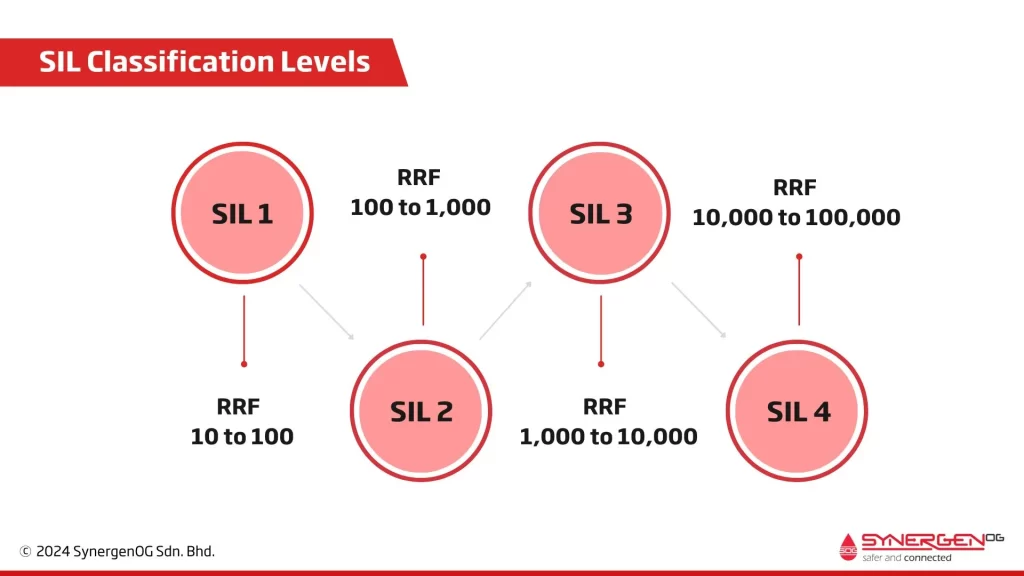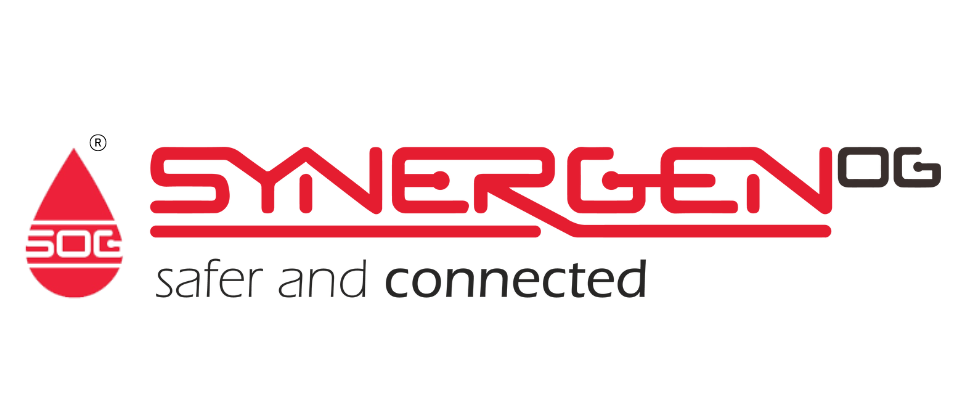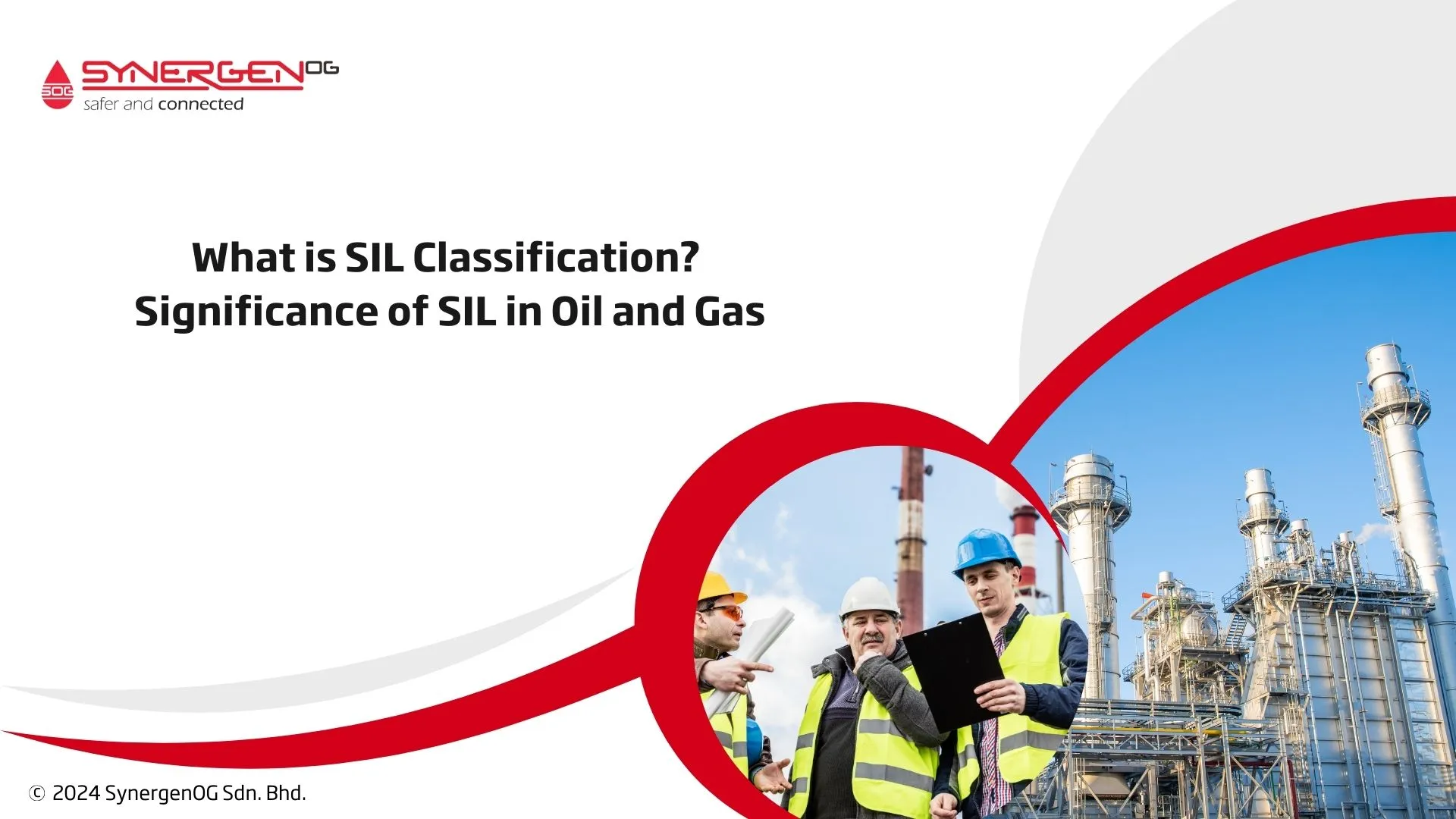| Summary: What are the 4 types of SIL? What is the difference between SIL 1, SIL 2, SIL 3 & SIL 4? This article aims to provide a thorough overview of SIL classification and the significance of SIL in SIF and SIS in the context of oil and gas. Although SIL determination is not just a regulatory necessity but a fundamental aspect of responsible and sustainable operations in high-risk industries. |
The oil and gas industry is one of the most hazardous sectors globally, with thousands of safety incidents reported annually. According to the International Association of Oil & Gas Producers, there were 21 fatalities and 580 total recordable injuries in 2021 alone.
In such a high-risk industry, ensuring safety is essential, and the Safety Integrity Level (SIL) is a critical component in achieving this. In this article, let’s explore the fundamentals of SIL, its significance, and the SIL classification.
What is SIL – Definition of Safety Integrity Level
Safety Integrity Level (SIL) is a measure of safety system performance in terms of probability of failure on demand (PFD). It’s an integral part of the overall safety management strategy in industries dealing with hazardous processes.
SIL represents the relative level of risk reduction provided by a safety instrumented function (SIF). Each SIL level corresponds to a range of risk reduction factors and the likelihood of a safety system performing correctly when needed.
Importance of SIL in Safety Instrumented Systems (SIS)
SIL is integral to SIS, which is designed to monitor and control safety-critical processes. A properly determined SIL (SIL classification) ensures that safety systems are robust enough to prevent accidents and protect lives.
SIL Classification Levels and Their Significance

SIL levels range from 1 to 4, with each level representing a different degree of risk reduction.
- SIL 1: The lowest level, offering a risk reduction factor (RRF) of 10 to 100. It indicates basic safety requirements with a higher probability of failure compared to higher levels.
- SIL 2: Provides a medium level of safety with an RRF of 100 to 1,000.
- SIL 3: Ensures a high level of safety with an RRF of 1,000 to 10,000.
- SIL 4: This is the highest level, rarely used in the oil and gas industry. It offers an RRF of 10,000 to 100,000 and is typically reserved for the most critical applications where failure could have catastrophic consequences, such as nuclear power plants and aerospace systems.
SIL in the Context of the Oil and Gas Industry
In the oil and gas industry, SIL is vital due to the inherent risks associated with operations such as drilling, refining, and transporting hydrocarbons.
Why SIL is Important for Oil and Gas Operations
The industry’s high-risk nature necessitates robust safety measures to prevent catastrophic incidents. SIL is strictly applicable to SIFs / SIS. Although it is applied in various other barrier systems, including process control, emergency shutdown systems,
1. Safety Integrated Functions (SIF) / Safety Integrated Systems (SIS)
Safety Instrumented Functions (SIFs) are specific safety-related functions that are implemented by a combination of sensors, logic solvers, and final control elements. They are part of a Safety Instrumented System (SIS), which is designed to monitor process conditions and take corrective actions when predefined conditions are met.
Applying SIL to SIF and SIS in the oil and gas industry involves a comprehensive process that starts with hazard and risk assessment, followed by the definition and determination of SIL requirements for SIFs. The design and implementation of SIS must meet these SIL requirements, and the system must undergo rigorous verification, validation, installation, and commissioning. Continuous operation, maintenance, and performance monitoring ensure that the SIS remains effective.
2. Emergency Shutdown Systems (ESD)
Emergency Shutdown Systems are designed to safely shut down operations in the event of a hazardous situation. They are critical in preventing escalations that could lead to severe incidents, such as fires, explosions, or toxic releases.
An ESD system must operate reliably under high-stress conditions, making the appropriate SIL determination vital for ensuring its effectiveness.
2. Fire and Gas Detection Systems
Fire and Gas Detection Systems monitor the presence of fire or gas leaks within an oil and gas facility. These systems are essential for early detection of potential hazards and initiating timely responses, such as activating alarms or automatic suppression systems.
Given the potential for rapid escalation in case of gas leaks or fires, these systems often require higher SIL ratings to ensure prompt and reliable performance.
Read: Fire & Explosion Hazards in Oil & Gas
3. Process Control Systems
Process Control Systems maintain the safe and efficient operation of various processes within an oil and gas facility. These systems regulate parameters such as temperature, pressure, and flow rates to ensure they remain within safe limits. By preventing deviations that could lead to dangerous situations, such as overpressure or equipment failure, SIL-rated process control systems enhance operational safety.
4. Pressure Relief Systems
Pressure Relief Systems are designed to release excess pressure from equipment and pipelines to prevent ruptures or explosions. These systems are essential in managing overpressure scenarios, which can arise from process upsets or equipment malfunctions.
A high SIL rating for pressure relief systems ensures they will function correctly when needed, thereby protecting both personnel and equipment.
5. Blowout Preventers (BOP)
Blowout Preventers are used in drilling operations to seal, control, and monitor oil and gas wells. They are critical in preventing blowouts, which can result in catastrophic events such as oil spills and fires.
Given their role in managing high-pressure situations, BOPs are often assigned higher SIL levels to guarantee their reliability and performance during drilling operations.
6. Burner Management Systems (BMS)
Burner Management Systems control the safe start-up, operation, and shutdown of industrial burners. In the oil and gas industry, BMS is essential for preventing uncontrolled combustion events, which can lead to explosions or fires.
A suitable SIL rating ensures that these systems operate safely and effectively, mitigating the risks associated with burner operations.
7. High Integrity Pressure Protection Systems (HIPPS)
HIPPS are designed to prevent over-pressurization of pipelines and vessels by shutting off the source of excessive pressure. These systems serve as a barrier against potential breaches and leaks, protecting both the facility and the environment.
High SIL ratings for HIPPS are necessary to ensure their fail-safe operation in critical pressure scenarios.
The Role of SIL in Process Safety Management
1) Enhancing Operational Safety
SIL plays a pivotal role in enhancing operational safety by ensuring that safety systems are reliable and effective.
How SIL Contributes to Preventing Accidents and Incidents: By specifying the required performance levels for safety systems, SIL helps in the design and implementation of measures that significantly reduce the likelihood of accidents.
The Role of SIL in Mitigating Process Hazards: SIL determination ensures that appropriate safety levels are maintained, thus mitigating risks associated with process hazards.
2) Indicates Adequacy of Safety Barriers
Facilities having many SIFs with high SIL levels can be an indication of inadequate barriers (over reliance on SIF). If the facility overly depends on SIFs, it might indicate a deficiency in other preventive and mitigative barriers, thereby putting an excessive burden on the SIS. SIFs should be regarded as one part of a larger safety strategy. High SIL SIFs should be used where necessary, but not as the sole or primary means of risk reduction.
Good design and operations should consider incorporating all forms of barriers instead of just focusing on SIFs.
3) Regulatory Compliance
Compliance with regulatory standards is essential for maintaining operational safety and avoiding legal repercussions.
Overview of Regulatory Requirements Related to SIL: Various international standards, such as IEC 61508 and IEC 61511, outline requirements for SIL in safety systems.
The Importance of Compliance for Legal and Operational Safety: Adhering to these standards not only ensures safety but also helps companies avoid fines, shutdowns, and legal liabilities
4) Economic Benefits
Implementing SIL is not only about enhancing safety but also offers significant economic advantages.
Cost Implications of Implementing SIL: Initial implementation costs can be high, but the benefits outweigh them.
Long-term Economic Benefits of Preventing Incidents Through SIL Implementation: Preventing incidents reduces downtime, avoids costly repairs, and minimizes liability and insurance costs, ultimately leading to long-term savings.
Conclusion
Understanding and implementing the correct Safety Integrity Level is important for maintaining safety and efficiency in the oil and gas industry. By comprehensively determining SIL through SIL classification, companies can enhance safety, ensure regulatory compliance, and achieve significant economic benefits. Prioritizing SIL determination is not just a regulatory necessity but a fundamental aspect of responsible and sustainable operations in high-risk industries like oil and gas.


[…] functions based on the level of risk associated with specific process scenarios. By integrating SIL into key methodologies like HAZOP (Hazard and Operability Study), HAZID (Hazard Identification), and […]
[…] culture thrives when safety is treated as a shared responsibility supported by objective measures. SIL adds structure to this culture […]